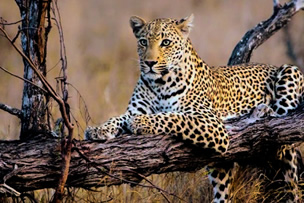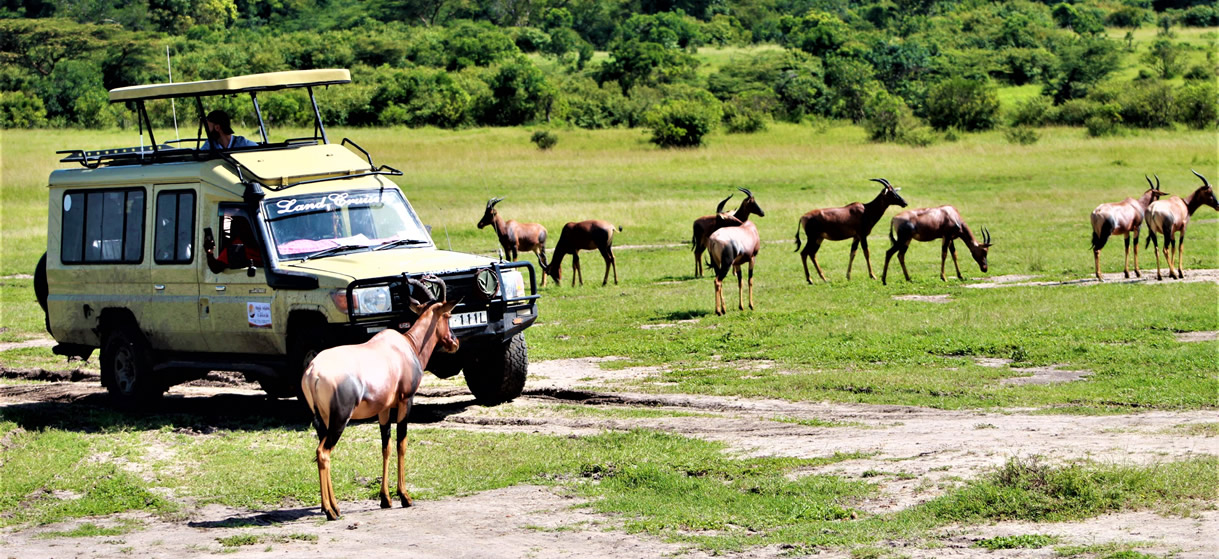Tanzania is renown wildlife paradise with extraordinary diversity of mammals particularly in the endless plains of the savannahs endowed with a unique combination of tourist attractions, comprising of tropical beaches, abundant wildlife in its natural habitats in areas such as Serengeti national Park, Arusha National Park, Ngorongoro Craters, scenic beauty and geographically diverse landscape, capture the spirit of East Africa, Spark the imagination, reward the senses, stimulate the intellect and enliven the the spirit
Day 1.Arrive at Kilimanjaro International Airport meet with the African Bird Guide Safaris Guide and transfer to the hotel in Arusha for overnight.
Day 2.Morning Game Drive in Arusha National Park
 After early morning breakfast drive to Arusha National Park. It covers Mount Meru, a prominent volcano with an elevation of 4566 m, in the Arusha Region of north eastern Tanzania. The park is small but varied with spectacular landscapes in three distinct areas. In the west, the Meru Crater funnels the Jekukumia River; the peak of Mount Meru lies on its rim. Ngurdoto Crater in the south-east is grassland. The shallow alkaline Momella Lakes in the north-east have varying algal colors and are known for their wading birds. See as well monkeys
After early morning breakfast drive to Arusha National Park. It covers Mount Meru, a prominent volcano with an elevation of 4566 m, in the Arusha Region of north eastern Tanzania. The park is small but varied with spectacular landscapes in three distinct areas. In the west, the Meru Crater funnels the Jekukumia River; the peak of Mount Meru lies on its rim. Ngurdoto Crater in the south-east is grassland. The shallow alkaline Momella Lakes in the north-east have varying algal colors and are known for their wading birds. See as well monkeys
Mount Meru is the second highest peak in Tanzania after Mount Kilimanjaro, which is just 60 km away and forms a backdrop to views from the park to the east. Arusha National Park lies on a 300-kilometre axis of Africa’s most famous national parks, running from Serengeti and Ngorongoro Crater in the west to Kilimanjaro National Park in the east.
Day 3. Transfer to Serengeti National park
After breakfast transfer to Serengeti National Park, It is about 350 KM from Arusha to Serengeti national park, the journey is full of scenic view with horizons that never to seem to end arriving to the lodge during lunch hours and thereafter you will definitely enjoy evening game drive in Serengeti national park
The Serengeti National Park is a Tanzanian national park in the Serengeti ecosystem in the Mara and Simiyu regions It is famous for its annual migration of over 1.5 million white-bearded (or brindled) wildebeest and 250,000 zebra and for its numerous Nile crocodile and honey badger, game drives are designed to take you close to the wildlife rich spots in Serengeti National Park. This gives you an opportunity to view wild animals in their natural habitat as they go about their daily activities.
Day 4.Morning Game drive in Serengeti national park
 After early morning breakfast go for game drive safari in Serengeti National Park the first thing in the morning, you will find the Serengeti at its most active. This is when Africa can reveal its cool side, so you should wrap up warm we aim to be on the road before the sun rises at around 6.00 am.
After early morning breakfast go for game drive safari in Serengeti National Park the first thing in the morning, you will find the Serengeti at its most active. This is when Africa can reveal its cool side, so you should wrap up warm we aim to be on the road before the sun rises at around 6.00 am.
Our guides will bring you as close as possible to the wildlife, just when the action is likely to be most exciting. Few predators hunt during the heat of the day, so the early morning is the best time to observe the thrill of the chase. It is also a magical time, with the subtle light dappling the landscape, the birds awakening and the sense of a great adventure beginning to unfurl, before further viewing leads you back to the lodge in good time for lunch and leisure at the camp.
Evening Game Drive in Serengeti National Park
Heading into the bush for an evening game drive has a level of excitement and character all its own, as predators begin their nightly search for prey. As the day cools and the sky is streaked by red, gold and orange hues, you may be surprised by the roar of a lion, a galloping giraffe, or the high pitched giggling of hyenas fighting over a kill. At a suitable vantage point, your guide will pause, allowing you to enjoy a sundowner in blissful comfort.
Day 5.Transfer to Ngorongoro Craters
The Ngorongoro Conservation Area is a protected area and a located 180 km west of Arusha in the Crater Highlands area of Tanzania. The area is named after Ngorongoro Crater a large volcanic caldera within the area. The conservation area is administered by the Ngorongoro Conservation Area Authority the main feature of the Ngorongoro Conservation Authority is the Ngorongoro Crater, the world’s largest inactive, intact and unfilled volcanic crater, which formed when a large volcano exploded and collapsed on itself two to three million years ago
The 2009 Ngorongoro Wildlife Conservation Act placed new restrictions on human settlement and subsistence farming in the Crater, displacing Maasai pastoralists, most of whom had been relocated to Ngorongoro from their ancestral lands to the north when the British colonial government established Serengeti National Park in 1959.The name of the crater has an onomatopoeic origin; it was named by the Maasai pastoralists after the sound produced by the cowbell (ngoro ngoro). Based on fossil evidence found at the Olduvai Gorge, various hominid species have occupied the area for 3 million years.
Visit the Oldupai or Olduvai Gorges , situated in the plains area. It is considered to be the seat of humanity after the discovery of the earliest known specimens of the human genus, The Olduvai Gorge is a steep-sided ravine in the Great Rift Valley, which stretches along eastern Africa. Olduvai is in the eastern Serengeti Plains in northern Tanzania and is about 50 kilometers long. It lies in the rain shadow of the Ngorongoro highlands and is the driest part of the region. The gorge is named after Oldupaai the Maasai word for the wild sisal plant,
It is one of the most important prehistoric sites in the world and research there has been instrumental in furthering understanding of early human evolution. Excavation work there was pioneered by Mary and Louis Leakey in the 1950s and is continued today by their family. Some believe that millions of years ago, the site was that of a large lake, the shores of which were covered with successive deposits of volcanic ash. Around 500,000 years ago seismic activity diverted a nearby stream which began to cut down into the sediments, revealing seven main layers in the walls of the gorge. The crater has one of the densest known population of lions.
Day 6.Full Day Game drive in Ngorongoro
 After early morning breakfast proceed for a full day safaris the best way to see the full range of what this magnificent park has to offer. Each excursion departs at around 6:30 am and returns back to camp by evening 6:30pm, with your private 4×4 fully equipped to cross the Ngorongoro in search of game.
After early morning breakfast proceed for a full day safaris the best way to see the full range of what this magnificent park has to offer. Each excursion departs at around 6:30 am and returns back to camp by evening 6:30pm, with your private 4×4 fully equipped to cross the Ngorongoro in search of game.
The early mornings are relatively cool, but by midday it can become very hot indeed and sun-block lotion and hats are advised. Lunch is served between the game drives at the heart of Serengeti overlooking the plains and big game.
It’s rewarding to watch the wildlife grazing around the plains of the camp, drinking water, or taking bath along the main swap just in front you is a thrilling experience. Animals expected to be seen here includes, wildebeest, buffaloes, lions, elephants, giraffes and so many antelopes
Day 7.Transfer to Zanzibar
Stone Town of Zanzibar, also known as Mji Mkongwe (Swahili for “old town”), is the old part of Zanzibar City, the main city of Zanzibar, in Tanzania. The newer portion of the city is known as Ng’ambo, Swahili for ‘the other side’. Stone Town is located on the western coast of Unguja, the main island of the Zanzibar Archipelago. Former capital of the Zanzibar Sultanate, and flourishing centre of the spice trade as well as the slave trade in the 19th century, it retained its importance as the main city of Zanzibar during the period of the British protectorate. When Tanganyika and Zanzibar joined each other to form the United Republic of Tanzania, Zanzibar kept a semi-autonomous status, with Stone Town as its local government seat.
Stone Town is a city of prominent historical and artistic importance in East Africa. Its architecture, mostly dating back to the 19th century, reflects the diverse influences underlying the Swahili culture, giving a unique mixture of Arab, Persian, Indian and European elements. For this reason, the town was designated as a UNESCO World Heritage Site in 2000
Day 8.Relaxed Boat Cruise in Zanzibar
 Transfer to Mombasa, the Kenya’s Indian Ocean beaches which are ranked among the top in the world. Enjoy the Kenya’s Indian Ocean coast it offers you with a plethora of equally thrilling activities, from wreck diving and kite-surfing to fresh water and deep sea fishing, tandem skydiving.
Transfer to Mombasa, the Kenya’s Indian Ocean beaches which are ranked among the top in the world. Enjoy the Kenya’s Indian Ocean coast it offers you with a plethora of equally thrilling activities, from wreck diving and kite-surfing to fresh water and deep sea fishing, tandem skydiving.
Day 9: Visit to Marine Park
After breakfast Visit the stunning array of Marine Park that offer coral gardens, rainbow fish and water that is warm and clear all year round enjoy and get the opportunity to watch the whales, dolphins tracking. The Indian Ocean boats a colorful coral-reefs teeming with tropical fish, dolphins, and humpback whales you can see gliding and leaping offshore. Spend a day exploring the coast on traditional dhow or relaxing on a palm-fringed sugar white beach, see kayak peddle-board, water-ski or windsurf the glistening waters with each experience here you will quench your thirst for unforgettable and adventure ridden journey. And you will be served hot lunch at the beach and then later in the evening you will drive back to the lodge for overnight.
Day 10.
After breakfast relax at the beach as you wait for your lunch and immediately after lunch proceed to the Airport to check in for the flight
END OF THE TRIP
.











Recent Comments